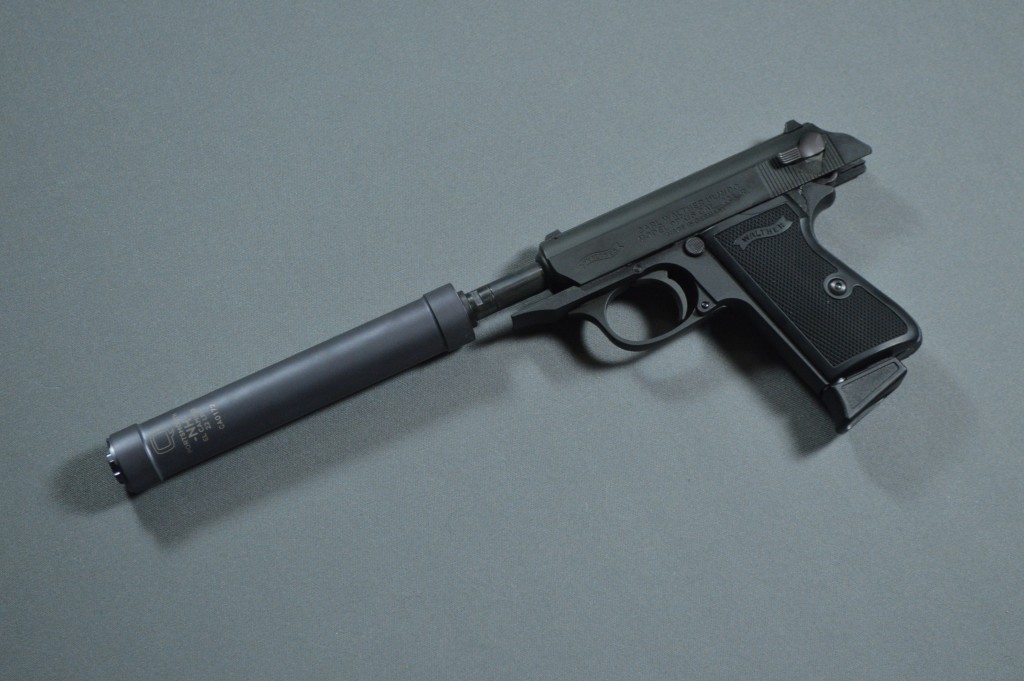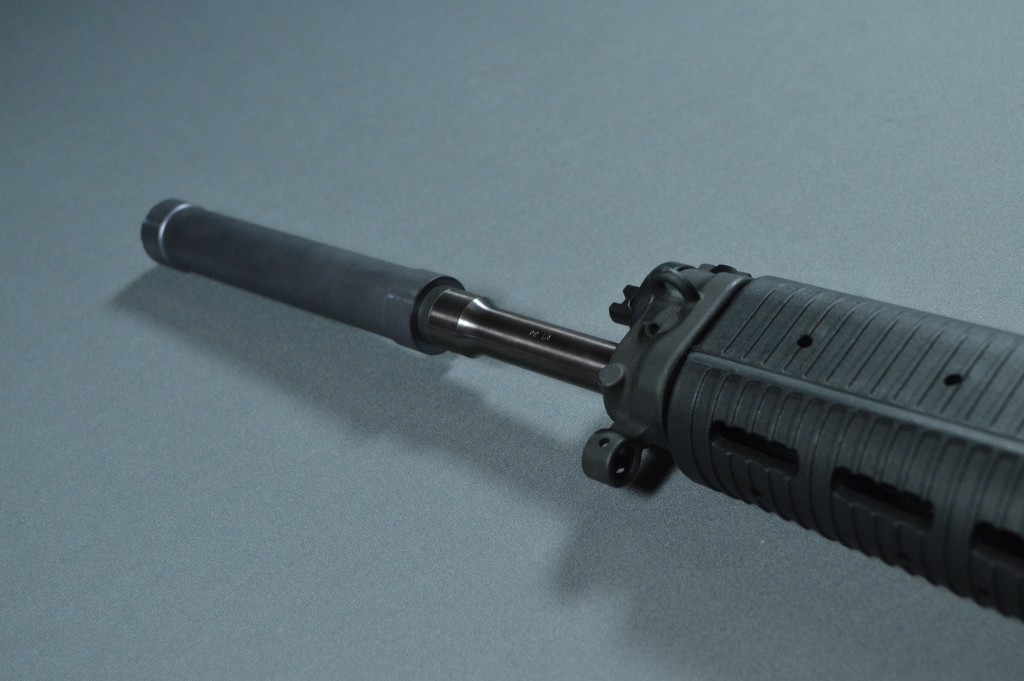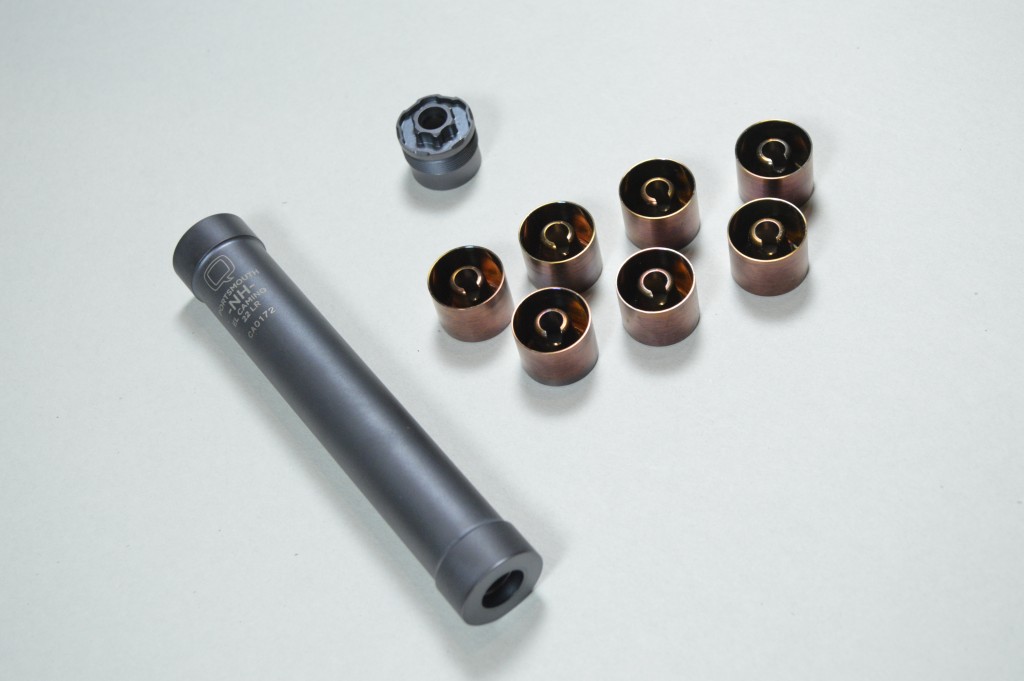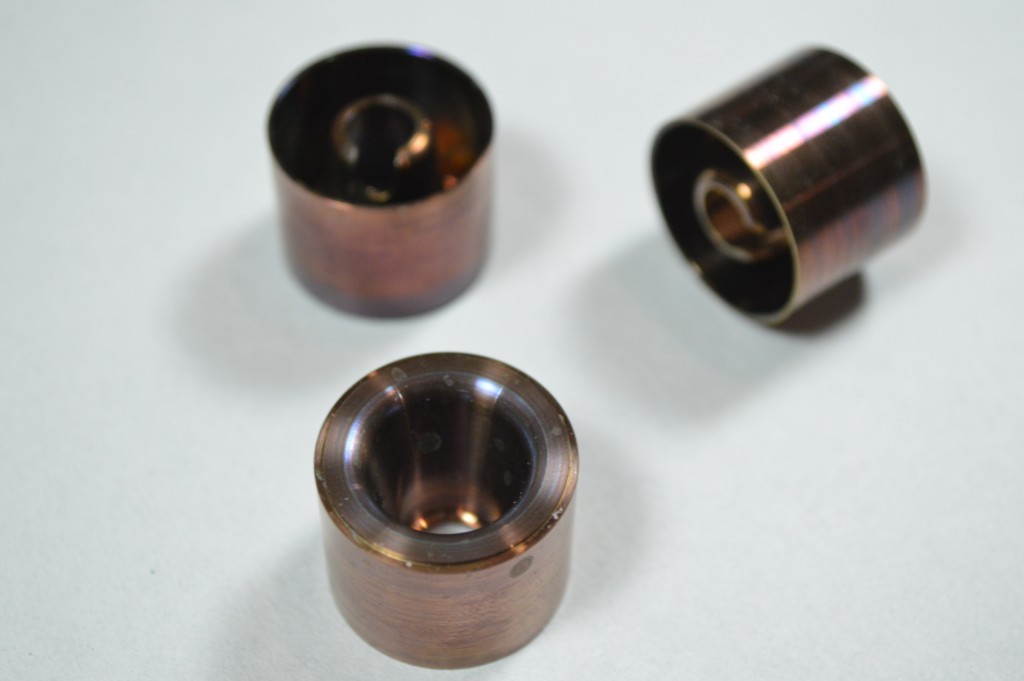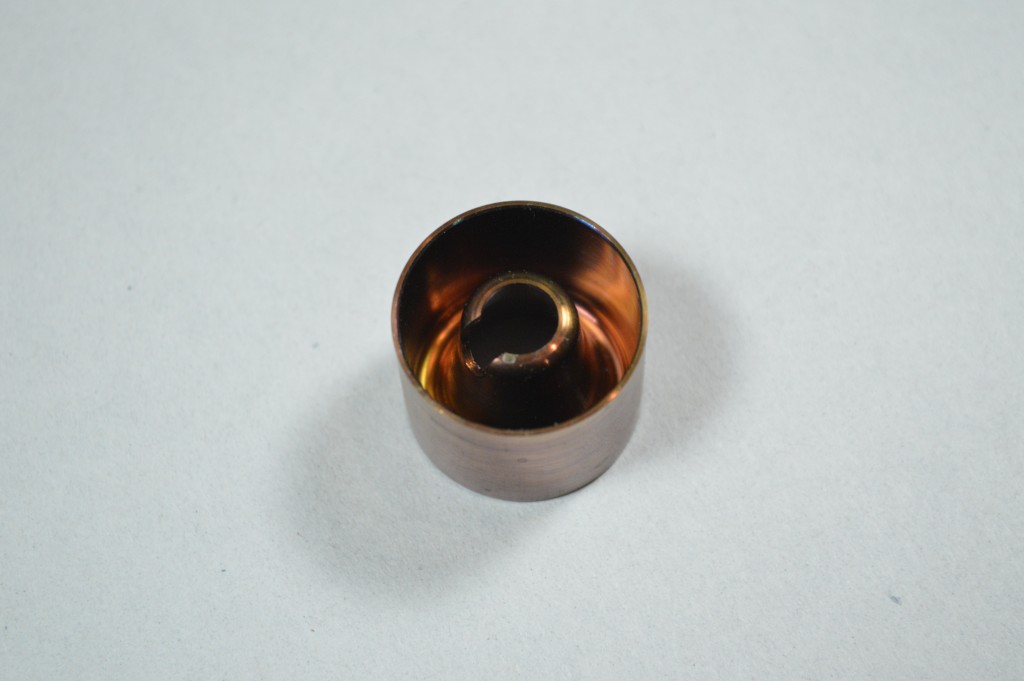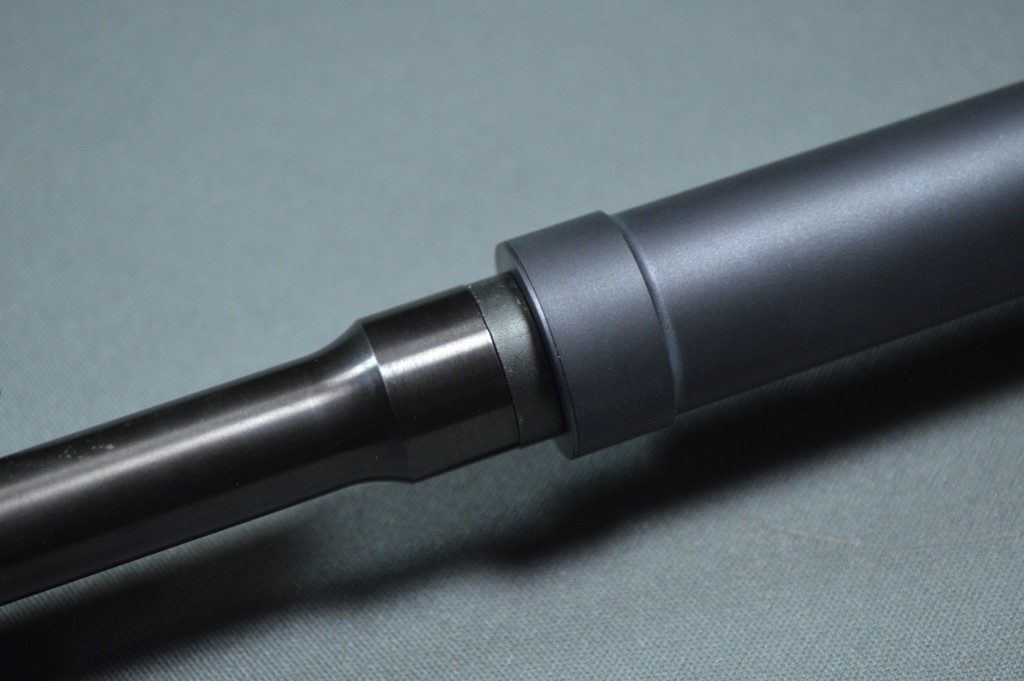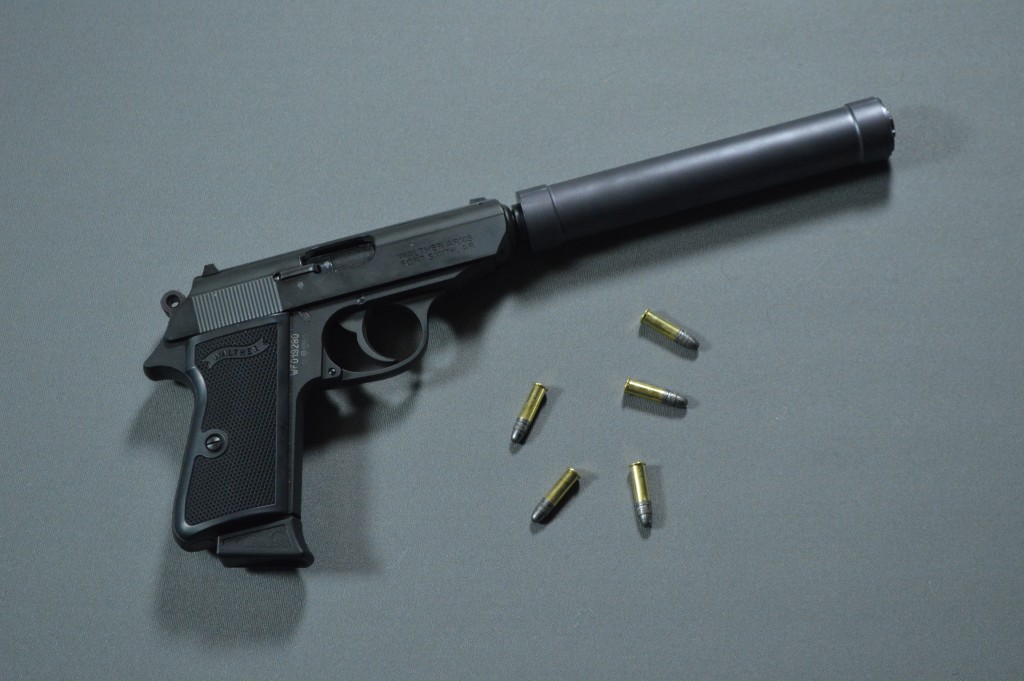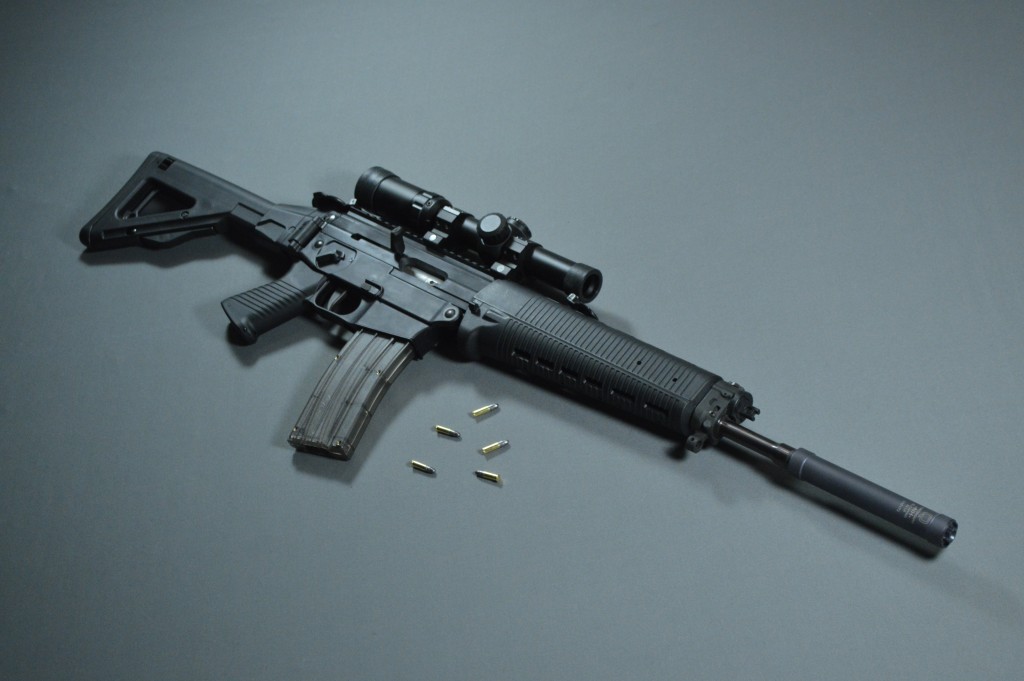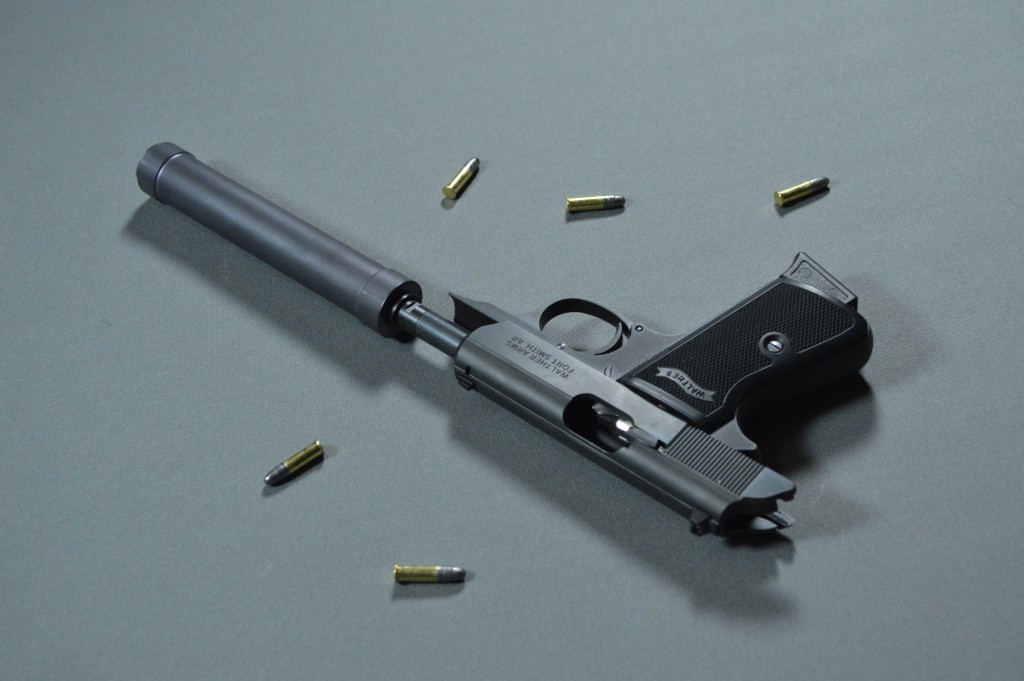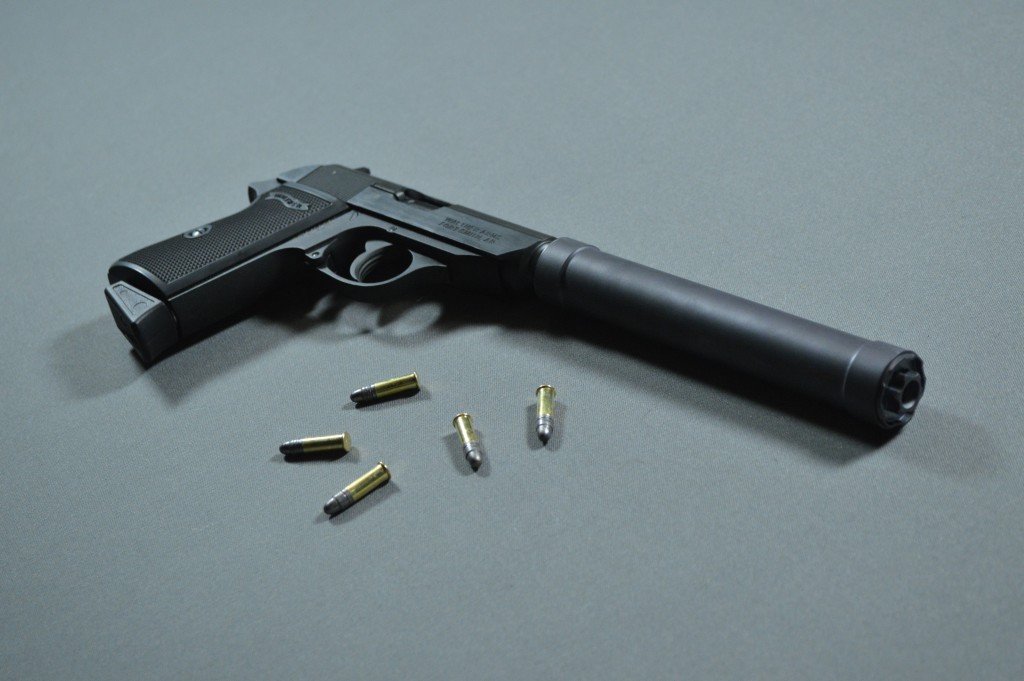Silencer Shop Authority: Q El Camino Review (Stainless Baffles)
A few months ago, I reported that a new player had suddenly appeared in the silencer game. After founding Advanced Armament, leaving there, kicking off silencer production at SIG, and then finding that environment too corportate, the sometimes abrasive – but always interesting – Kevin Brittingham opened the doors of his new shop, Q, back in March of this year.
As you might imagine, the new company has loads of irons in the fire, but they’ve finally released their first product. Dubbed the El Camino, Q’s first .22 suppressor had plenty of us reviewers lining up for time to check it out. Thankfully, my good friends over at Silencer Shop received a pile of the cans to send out to folks like me. As soon as they arrived, I managed to snag one for examination. Now that I’ve had time to play with it, let’s take a closer look.
Size & Weight
Compared to its peers, the El Camino finds itself on the long end of the spectrum. At a little over 5.75”, I haven’t tried too many .22 cans that were longer. Still, let’s be real. In the grand scheme of things, even 6” wouldn’t be terribly unreasonable or unwieldy. The El Camino simply isn’t a compact .22 silencer, which is as advantageous (perhaps more so) from a performance perspective as it is a hindrance to handling.
Despite its length, the El Camino is among the lightest suppressors I’ve tested and is definitely the lightest to feature a fully stainless baffle stack. According to my postal scale, the can comes in at just 4.3 ounces – so it’s just 0.2 ounces heavier than the mostly-aluminum AAC Aviator 2 and 0.7 ounces heavier than CGS’s Hydra-AL. That’s incredible for a stainless-baffled suppressor! In part, I think Q managed to make the silencer this light by reducing the tube’s wall thickness in-between the threads. At each end, the El Camino is 1” in diameter, but in the middle it is just 0.92”. The reduction doesn’t seem like much, but every ounce (and every fraction of an ounce) is magnified when we’re talking about silencers that are this light.
Materials & Design
Eventually, there will be two versions of the El Camino – a fully titanium one (weighing a scant 2.2 ounces) and a model with a titanium tube and 17-4 stainless steel baffles. This example is the latter, which makes its 4.3 ounce weigh-in so impressive. The titanium version hasn’t hit Silencer Shop’s shelves quite yet, but it should be right around the corner. Finishing off the El Camino’s titanium tube is a smooth, gray PVD (Physical Vapor Deposition) coating.
Inside the El Camino’s titanium tube sit seven M-style baffles. M-baffles are similar to cones, but their skirts run back towards the shooter, rather than the muzzle end. When pressed together inside the can, the baffle skirts help to seal the inside of the core from the outer tube, keeping fouling to a minimum and maintaining the silencer’s ease of disassembly.
With the El Camino apart, I was surprised by the depth of each baffle’s conical face. Usually, cone baffles are machined with 60-degree faces or thereabouts. The El Camino’s are much more acute, probably in the ballpark of 75-degrees. Like many baffles of this type, the bore aperture of each member features a scalloped mouse hole to cross jet gasses inside the tube, which improves performance.
Because the El Camino’s baffles feature tall, narrow cones, there is an area around the base of each where the cone and skirt meet that could accumulate lead and debris. Since it’s a tight space, I can see where it may be difficult to dig fouling out of these crevices. Fortunately, the baffles can be “dipped” or used with an ultrasonic cleaner to break obstinate lead free.
Taking the El Camino apart for cleaning is easy. Using a 1/2″ wrench or socket, unscrew the front cap. With the front cap off, the baffles slide easily out the front of the tube. Reassembly is the same process in reverse, but the baffles don’t click together. Therefore, it is easier to stack them up, then drop the tube over the newly-formed tower.
If you’re shopping for an El Camino, you may notice that Q includes a thread spacer with the can. The spacer is for use with longer-threaded rifles. Since the blast baffle sits so close to the silencer’s thread mount, threads longer than around 0.45″ won’t have enough room to fit inside the suppressor. In my opinion, the small blast chamber helps to minimize first round pop (FRP), but I cannot say if that was Q’s thinking when designing the El Camino. Regardless, it’s a pleasant surprise to see that Q is included the needed spacer with their silencers.
Range Report
When it comes to suppression, the El Camino lives up to the hype. I don’t have meter numbers for it at this point, but Q’s first silencer is in the top three rimfire cans I’ve reviewed, at minimum. It could very well be the quietest, but the category is incredibly tight. As someone who typically favors K-baffles in .22 suppressors, I was actually rather surprised by the El Camino’s performance. I know there’s no reason that an M-baffle or cone baffle silencer cannot perform well with .22 LR ammunition, but my favorites in the rimfire world have all been other designs, up to now.
Tonally, the El Camino also makes a strong showing. Some rimfire cans technically produce hearing safe results, but also come with high pitched reports that undermine their true performance. The El Camino does not fall victim to this fate. It offers some of the best overall sound quality I’ve heard and if I didn’t have other silencers to test, I would have happily shot it all day without need for additional hearing protection.
Remember how I mentioned the need for a spacer to use the El Camino on a rifle? Well there may be a reason for the silencer’s small blast chamber. As far as I can tell, this design is intended to limit the amount of oxygen in front of the first baffle in order to minimize FRP. If my assumption is correct, the design seems to work very well. With the can mounted on both my PPK/S and my SIG 522, I listened closely for any traces of FRP. I won’t say FRP was non-existent, but it was negligible.
The El Camino is very light, so I didn’t expect it to change much as far as point of impact (POI) is concerned. In fact, POI shift in any significant capacity is fairly unusual with .22 silencers as few are large enough to substantially affect barrel harmonics over the effective range of the round. Both with and without the El Camino, my SIG placed rounds in exactly the same place on my 50 yard target. In fact, the gun was accurate enough that I could pick the edges of my 3/8″ AR500 steel target at that distance. Some people have reported that the El Camino boosts their rifles’ accuracy. I cannot definitively confirm this claim, but my experience seems to support it.
Conclusion
Technically speaking, Q is a new name to both the firearms and silencer industries, but most of us know the folks up in New Hampshire aren’t exactly newbies. Years of past experience and plenty of previous (and popular) designs have contributed to this inaugural release – the El Camino.
Beyond all of that, the El Camino squarely hits all of the important technical points for a .22 silencer. Sure, it is a little long, but not unreasonably so. It’s remarkably light, offers exceptional sound performance and quality, and it should be easy to clean. Moreover, Q took no shortcuts in selecting materials for the El Camino as you’ll only find titanium and stainless steel (or titanium only) in this can.
If you’re interested in purchasing an El Camino, Silencer Shop is the exclusive distributor for the can. There, you’ll find it for a little under $400 with final pricing depending on your local Powered By dealer.
This has been a review of products sold by Silencer Shop. All opinions are my own.
An information security professional by day and gun blogger by night, Nathan started his firearms journey at 16 years old as a collector of C&R rifles. These days, you’re likely to find him shooting something a bit more modern – and usually equipped with a suppressor – but his passion for firearms with military heritage has never waned. Over the last five years, Nathan has written about a variety of firearms topics, including Second Amendment politics and gun and gear reviews. When he isn’t shooting or writing, Nathan nerds out over computers, 3D printing, and Star Wars.


